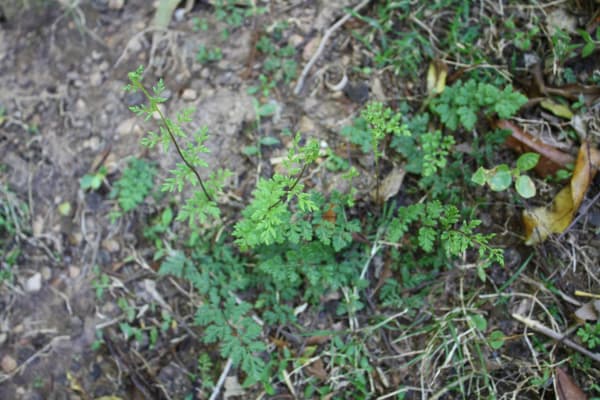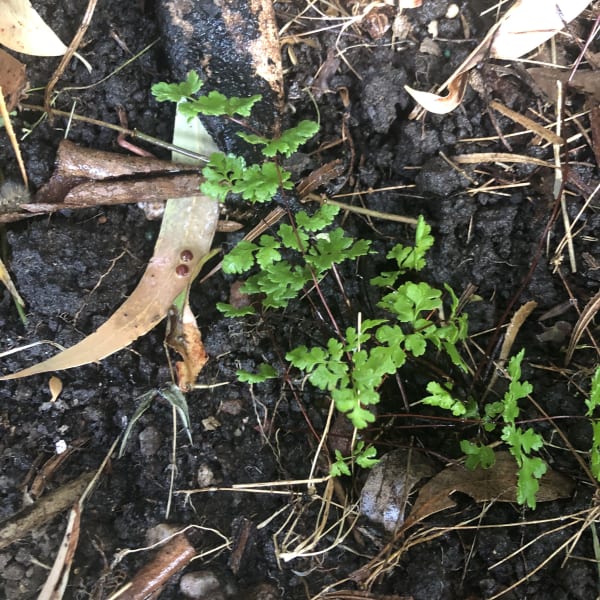The current dry, warm and often windy weather is a huge change from the rains that dominated most of the past four years. It's been a bit of a shock to gardens, parks and natural areas, and many places are looking dry, with lots of fallen leaves littering the ground.
One group of plants that are looking very much less happy than before is the ferns, with everything from tall tree ferns to the smallest ferns like Necklace Fern (Asplenium flabellifolium) drying out, losing fronds and decreasing in size or extent. Of course, ferns can cope with prolonged dryness, and many can reshoot from underground rhizomes well after the foliage above ground has died off.
One classic in this genre are the Cheilanthes, also known as Rock Ferns or Cloak Ferns, depending on the species. These are some of the toughest ferns around.
Some of our local Cheilanthes can cope in poor soils, on rocky outcrops and with relatively high light levels. You can spot these little ferns in Croom Reserve in Albion Park, on the sandy sandstone-derived soils of the area, and at Wiseman Park in Gwynneville, where they can be hard to spot among the taller ferns and assorted grasses.
They are a mixture of lacy-looking and wiry-looking, with narrow dark brown or black stipes (frond stems – these are the wiry bit) and 2- or 3-pinnate fronds, meaning that the frond lamina divides two or more times (which contributes to the lacy appearance).

There are actually three species of Cheilanthes that occur naturally in the Illawarra region: Rock Fern Cheilanthes austrotenuifolia, Cheilanthes distans (Bristly Cloak Fern), and Cheilanthes sieberi (no common name, but let's call it something like Dainty Rock Fern or Slender Cloak Fern!) . The three species look fairly similar but can be distinguished with attention to detail. The fronds of Rock Fern are broader (at 3cm to 10cm in width), while the other two have fronds that are generally less than 3cm wide.
Rock Fern (Cheilanthes austrotenuifolia) has an adaptation that allows it to cope with harsh dry summer conditions; the above-ground portion of the plant will usually die off, then resprout again when autumn comes. This means that if you grow it in your garden, you need to treat it the same as a bulb, and make sure you mark the spot where it's growing while it's present.
Like many ferns, these species can be difficult to obtain, though the Sutherland Shire Community Nursery has had Rock Fern in stock lately, which was a source of great excitement to me and one of the reasons I decided to cover the Cheilanthes this week.
As it's my first time with a cultivated Cheilanthes fern, I don't have any first-hand experience to share yet, but it's settled in well on a rocky part-sun slope where it gets a few splashes from a bird bath. If I never mention it again, you can assume the worst!






